Recent Posts
Safety Tips in Case of a Business Fire
5/14/2024 (Permalink)
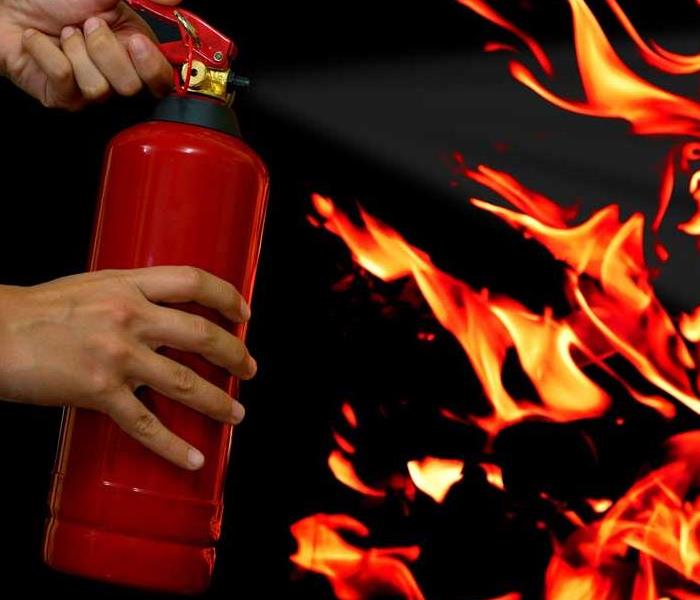
As a business owner, the safety of your employees and everyone else in your building is in your hands. Are you prepared to respond quickly in the event of a business fire? Follow these safety tips to ensure that you can answer that question in the affirmative.
1. Safety Features
Your two main sources of protection during a fire are your fire suppression system and your fire extinguishers. Have your fire suppression system, including alarm panels, fire doors and sprinklers, inspected regularly. Make sure you have enough working fire extinguishers to place one at least every 75 feet and that they are mounted properly.
2. Fire Codes
Your building is bound by both state and federal fire codes. Exits must be properly marked and the pathways to them unobstructed. Electrical plates must be used to cover all wiring so that none of it is exposed. Comply with all laws and make immediate changes when mandated by fire marshals.
3. Material Labeling
All potentially hazardous or flammable material must be stored properly. It is also essential to label liquids that could easily contribute to a business fire so that anyone who sees them knows what they are.
4. Evacuation Plan
Before firefighters can put out the fire and fire damage specialists can restore your building, everyone must vacate it. Having an evacuation plan helps everyone know what they’re supposed to do. This plan should be posted in prominent areas, especially around exits.
5. Evacuation Practice
Even the best plan is useless unless people know about it. Fire drills are a necessary part of fire preparation. Having a drill twice a year helps your employees practice fire safety plan so that they know what to do in case of an emergency.
The best business fire protection is preparation. Keeping your building up to code and enforcing safety measures can help you prevent most fires, and having a workable fire suppression system and evacuation plan can help get people to safety for the fires you can’t prevent.
Storm Safety Tips
5/14/2024 (Permalink)
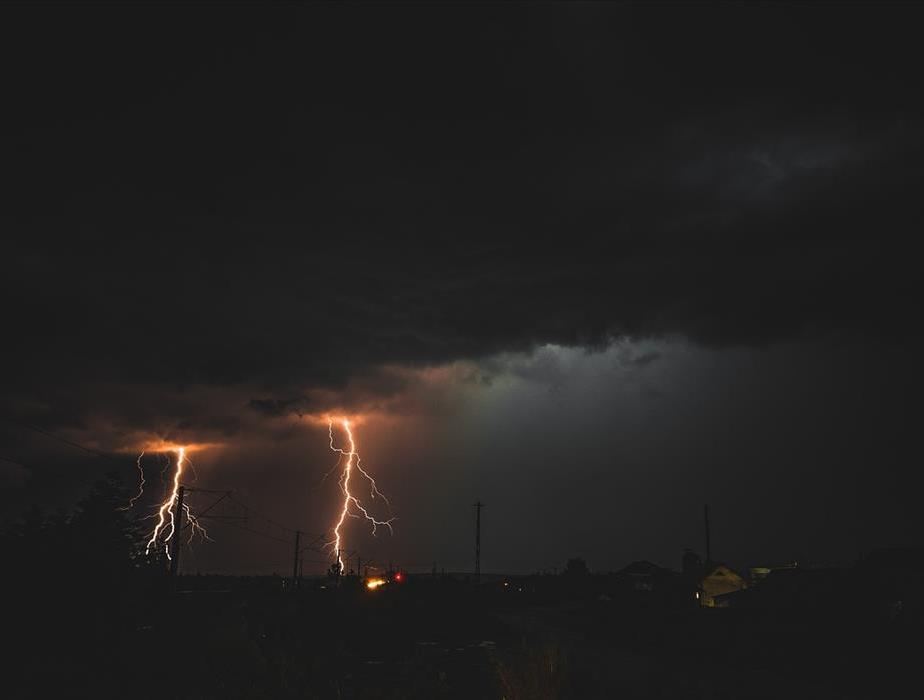
As a business owner, the safety of your employees and everyone else in your building is in your hands. Are you prepared to respond quickly in the event of a business fire? Follow these safety tips to ensure that you can answer that question in the affirmative.
1. Safety Features
Your two main sources of protection during a fire are your fire suppression system and your fire extinguishers. Have your fire suppression system, including alarm panels, fire doors and sprinklers, inspected regularly. Make sure you have enough working fire extinguishers to place one at least every 75 feet and that they are mounted properly.
2. Fire Codes
Your building is bound by both state and federal fire codes. Exits must be properly marked and the pathways to them unobstructed. Electrical plates must be used to cover all wiring so that none of it is exposed. Comply with all laws and make immediate changes when mandated by fire marshals.
3. Material Labeling
All potentially hazardous or flammable material must be stored properly. It is also essential to label liquids that could easily contribute to a business fire so that anyone who sees them knows what they are.
4. Evacuation Plan
Before firefighters can put out the fire and fire damage specialists can restore your building, everyone must vacate it. Having an evacuation plan helps everyone know what they’re supposed to do. This plan should be posted in prominent areas, especially around exits.
5. Evacuation Practice
Even the best plan is useless unless people know about it. Fire drills are a necessary part of fire preparation. Having a drill twice a year helps your employees practice fire safety plan so that they know what to do in case of an emergency.
The best business fire protection is preparation. Keeping your building up to code and enforcing safety measures can help you prevent most fires, and having a workable fire suppression system and evacuation plan can help get people to safety for the fires you can’t prevent.
What Cause Home Fires? Unclean Grills
5/8/2024 (Permalink)
Nothing says summer in Nashville, TN like the smell of your favorite foods on the grill. When the temperatures climb, it may feel easier to take dinner prep outdoors rather than sweat over a hot stove. However, it's important to clean your grill every time you use it. Not only does this prolong the life of the appliance, but it protects your home from fires as well.
In a survey between 2014-2018, over 10,600 home fires were linked to grills and barbecues. A buildup of oil and grease makes your grill more susceptible to putting up large flames that can catch onto porches, roofs, and dry grass. Proper grill maintenance is essential for keeping your favorite summer activity safe.
- Clean the Grates
Proper grill cleaning after every meal makes maintenance much easier. For either a gas or charcoal grill, scrub the grates while they're still hot and before the food particles stick too badly.
Some people like wire brushes, though balled-up aluminum foil also works and won't leave little bristles behind.
- Check for Grease or Ashes
Avoiding grease fires is a top priority with gas grills. Before you turn on the grill, check the grease tray. If it gets overfilled, you'll be cleaning grease spots off your patio.
Similarly, always dispose of all completely cooled ashes from your charcoal barbecue.
- Deep Clean Annually
When the grilling season ends, deep grill cleaning saves your grill and prevents problems next season. Kicking off the season the next year with a fire due to an improperly maintained grill can put a major damper on your next barbecue. - Know Grease Fire Safety
Educate yourself on how to extinguish a fire in your grill. Never use water, as water can actually make a grease fire worse. Closing the lid is a good first step because it stops oxygen flow to the flames.
If you do have a home fire, a local fire restoration company can help with repairs.
Enjoy the grilling season to the fullest by practicing good grill cleaning habits to protect your home and your dinner.
The Role of Plumbing Inspections in Preventing Costly Repairs
4/19/2023 (Permalink)
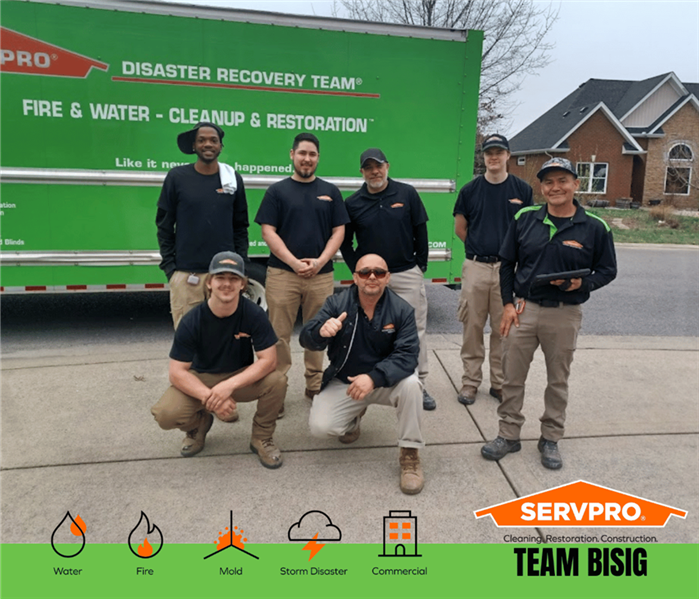 Our local SERVPRO restoration team is here to help! Whether you live in Murfreesboro, Smyrna, or anywhere in between.
Our local SERVPRO restoration team is here to help! Whether you live in Murfreesboro, Smyrna, or anywhere in between.
A well-maintained plumbing system is essential for any home or business, as it directly affects the functionality, comfort, and safety of the property. Regular plumbing inspections can help prevent costly repairs and extend the life of your plumbing system. In this article, we will discuss the role of plumbing inspections in preventing expensive repairs and why it's essential to schedule routine inspections for your property.
- Early Detection of Potential Issues A key benefit of regular plumbing inspections is the early detection of potential issues. When you schedule an inspection, a professional plumber will examine your plumbing system for any signs of wear, corrosion, or damage. By identifying potential problems early on, you can address them before they escalate and cause costly damage to your property. Early detection of issues like leaks, clogs, and faulty fixtures can save you a significant amount of money on repairs and replacements.
- Preventing Water Damage Water damage is a common and costly issue that can arise due to problems in the plumbing system. Leaks, burst pipes, and overflowing fixtures can all lead to water damage, which can be expensive to repair and may require professional water damage restoration services. Regular plumbing inspections help prevent water damage by ensuring that all components of your plumbing system are functioning correctly and identifying any issues before they lead to more extensive damage.
- Maintaining Optimal Efficiency A properly functioning plumbing system is essential for maintaining the efficiency of your home or business. Issues such as leaks, clogs, and damaged fixtures can all contribute to increased water consumption and higher utility bills. By scheduling regular plumbing inspections, you can ensure that your plumbing system is running optimally, which can help save you money on your water bills and reduce your environmental impact.
- Extending the Lifespan of Your Plumbing System Regular plumbing inspections can help extend the lifespan of your plumbing system by identifying and addressing any issues that may cause damage or decrease its efficiency. By investing in routine inspections and maintenance, you can prevent the need for premature replacements and costly repairs, ultimately saving you money in the long run.
- Ensuring Compliance with Local Regulations For commercial properties, regular plumbing inspections are essential to ensure compliance with local building codes and regulations. Non-compliance can result in fines and penalties, as well as potential safety hazards for employees and customers. Scheduling routine plumbing inspections can help you avoid these issues and maintain a safe, compliant environment for your business.
- Enhancing Property Value A well-maintained plumbing system is a valuable asset for any property owner. Regular plumbing inspections can help you maintain and even enhance your property's value by ensuring that your plumbing system is functioning efficiently and effectively. When it comes time to sell your property, a well-maintained plumbing system can be a significant selling point for potential buyers.
Conclusion:
The importance of regular plumbing inspections for home and business owners cannot be overstated. By investing in routine inspections, you can detect potential issues early on, prevent costly repairs, maintain optimal efficiency, and extend the lifespan of your plumbing system. Ultimately, this proactive approach will save you money and ensure the comfort, safety, and functionality of your property. However, in case problems arise and water damage occurs – contact SERVPRO of Rutherford County today. Our team of experts has the knowledge an equipment to handle any type or severity of water damage. Enjoy the peace of mind that comes with knowing your plumbing system is in good hands. We’re always here to help.
Commercial Odor Control: Best Practices for Maintaining a Fresh Business Environment
4/18/2023 (Permalink)
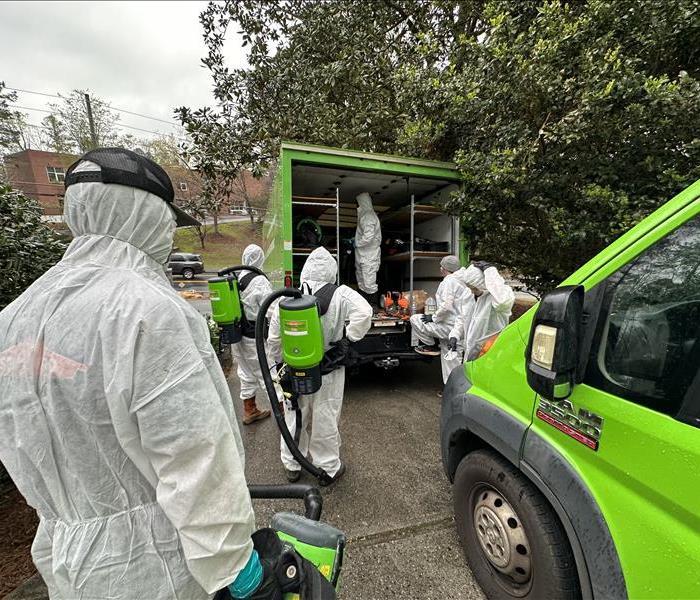 SERVPRO of Rutherford County is here to help with all of your commercial cleaning and odor removal needs. Call us for a free estimate!
SERVPRO of Rutherford County is here to help with all of your commercial cleaning and odor removal needs. Call us for a free estimate!
Maintaining a clean and fresh-smelling business environment is essential for creating a positive impression on customers, clients, and employees. Unpleasant odors can deter customers from returning and affect employee morale and productivity. In this blog, we will discuss best practices for commercial odor control, focusing on identifying and addressing common sources of commercial odors, fire damage odor control, implementing a regular cleaning and maintenance schedule, and the role of professional odor removal services like fire damage restoration and commercial cleaning services.
Identifying and Addressing Common Sources of Commercial Odors
The first step in effective odor control is identifying the sources of unpleasant odors. Common sources of commercial odors include:
- Mold and mildew growth
- Smoke damage from fires or cigarettes
- Cooking odors in kitchens and break rooms
- Pet odors in pet-friendly establishments
- Chemical odors from cleaning products or industrial processes
- Garbage and waste odors in dumpsters or trash areas
Once you've identified the sources of odors, address them with targeted cleaning and odor removal strategies. For example, regularly clean and sanitize high-traffic areas, such as kitchens and bathrooms, to prevent mold and mildew growth. Additionally, ensure proper ventilation and air circulation to prevent the buildup of stale air and lingering odors.
Managing Mold and Mildew-Related Odors
Mold and mildew are common culprits when it comes to persistent and unpleasant odors in commercial spaces. These fungi thrive in damp, humid environments and can cause not only unpleasant smells but also potential health issues for employees and customers. Here are some tips to help manage mold and mildew-related odors in your business environment:
Address moisture problems promptly
Mold and mildew grow in moist conditions, so it's essential to identify and address any moisture problems quickly. This could include fixing leaks, drying out water-damaged areas, and ensuring proper ventilation in high-humidity areas like kitchens or bathrooms. Regularly inspect your commercial space for signs of moisture issues to prevent mold and mildew growth.
Regularly clean and sanitize affected areas
To keep mold and mildew-related odors at bay, regularly clean and sanitize areas prone to these growths. Use anti-fungal cleaning solutions and follow up with a disinfectant to kill any lingering mold spores. Make sure to clean not only visible surfaces but also hidden areas, such as behind appliances or under sinks, where mold and mildew may thrive unnoticed.
Replace porous materials
Porous materials, such as carpets, drywall, or upholstery, can absorb moisture and provide a suitable environment for mold and mildew growth. If these materials have been affected by mold or mildew, consider replacing them with non-porous options or treating them with a mold-resistant sealant to help prevent future growth.
Improve ventilation and air circulation
Proper ventilation and air circulation are vital for preventing mold and mildew growth. Ensure your commercial space has adequate ventilation, especially in areas with high humidity levels. You can also use fans or air purifiers with HEPA filters to improve air circulation and remove mold spores from the air.
Seek professional help when needed
If mold and mildew growth is extensive or persistent, it may be time to call in professional help. A commercial cleaning service, such as SERVPRO of Rutherford County, can provide thorough mold and mildew remediation to eliminate both the source of the problem and the associated odors.
By implementing these tips and maintaining a proactive approach to managing mold and mildew-related odors, you can ensure a healthier and more pleasant environment for everyone in your commercial space.
Fire Damage Odor Control: Strategies for Neutralizing Smoke and Soot Smells
After a fire, lingering smoke and soot odors can be challenging to remove. These odors can permeate building materials, furniture, and textiles, making it crucial to address them as soon as possible. Here are some strategies for neutralizing smoke and soot smells after fire damage:
- Remove damaged materials: Remove and discard any materials that have been severely damaged by fire or smoke, such as furniture, textiles, and insulation.
- Clean all surfaces: Thoroughly clean all surfaces, including walls, ceilings, and floors, using specialized cleaning solutions designed for fire damage restoration.
- Deodorize: Utilize odor counteractants, air scrubbers, and ozone generators to neutralize and remove lingering odors from the air and affected materials.
- HVAC cleaning: Clean and sanitize the HVAC system to prevent the spread of smoke odors throughout the building.
- Professional fire damage restoration: If the fire damage is extensive or the odors are persistent, consider hiring a professional fire damage restoration company that specializes in odor removal and commercial cleaning services.
Implementing a Regular Cleaning and Maintenance Schedule for Optimal Odor Management
Regular cleaning and maintenance are essential for maintaining a fresh and odor-free business environment. A consistent cleaning schedule should include:
- Daily cleaning of high-traffic areas, such as restrooms, break rooms, and entryways
- Weekly deep-cleaning of floors, carpets, and upholstered furniture
- Monthly inspections and cleaning of HVAC systems to ensure proper air circulation and odor control
- Regular garbage disposal and cleaning of dumpsters or trash areas to prevent waste odors
- Periodic professional deep-cleaning and odor removal services to address persistent or challenging odors
By implementing a regular cleaning and maintenance schedule, you can proactively address potential odor issues before they become a problem for your business.
The Role of Professional Odor Removal Services in Maintaining a Healthy and Welcoming Business Environment
In some cases, DIY cleaning and odor control methods may not be enough to address persistent or challenging odors. Professional odor removal services, such as fire damage restoration and commercial cleaning services, can provide specialized equipment and expertise to effectively eliminate odors and maintain a healthy and welcoming business environment. These services may include:
- Advanced deodorization techniques, such as ozone treatments, hydroxyl generators, or fogging
- HEPA air scrubbers to remove airborne contaminants and odors
- Deep cleaning of carpets, upholstery, and textiles to remove embedded odors
- Mold and mildew remediation to address odor-causing microbial growth
- Smoke and fire damage restoration to remove lingering smoke odors and soot residue
By utilizing professional odor removal services, you can ensure that your business environment remains fresh and inviting for customers, clients, and employees alike.
Conclusion
Maintaining a fresh and welcoming business environment is crucial for creating positive impressions and fostering a healthy workplace. By identifying and addressing common sources of commercial odors, implementing effective fire damage odor control strategies, maintaining a regular cleaning and maintenance schedule, and utilizing professional odor removal services when necessary, you can successfully manage odors in your commercial space.
If you're in need of professional fire damage restoration, odor removal, or commercial cleaning services, look no further than SERVPRO of Rutherford County. Our team of experts is equipped with the knowledge and tools necessary to tackle even the most challenging odor problems, ensuring your business environment is clean, fresh, and inviting. Call us today at (615) 731-4222 to schedule a consultation and let us help you make your commercial space "Like it never even happened."
Odor Removal: Eliminating Smoke Smells After a Fire
4/5/2023 (Permalink)
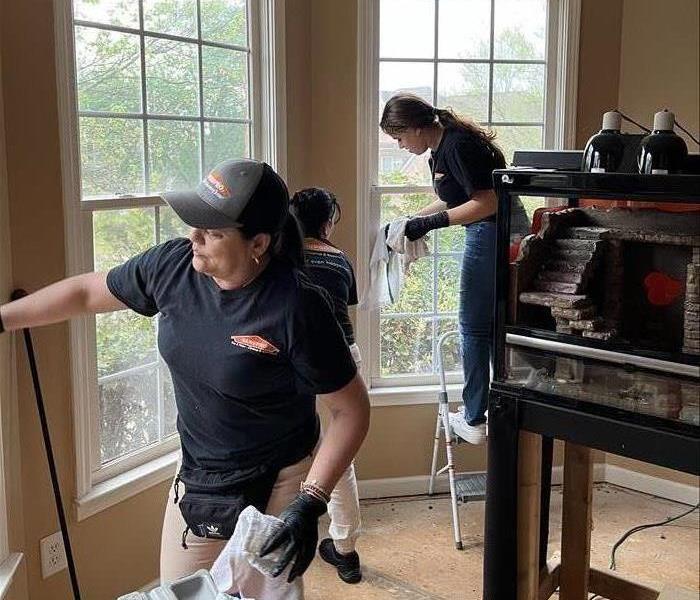 Our SERVPRO Fire Damage Restoration team is here to help you whether you live in Murfreesboro, Smyrna, or anywhere else in Rutherford County, TN.
Our SERVPRO Fire Damage Restoration team is here to help you whether you live in Murfreesboro, Smyrna, or anywhere else in Rutherford County, TN.
A fire in your home or business can be a devastating experience, and even after the flames have been extinguished, the lingering smoke smell can serve as an unwelcome reminder of the incident. Proper odor removal is an essential aspect of fire damage restoration, as it helps you regain a sense of normalcy and makes your property comfortable to inhabit once again. In this article, we will explore the steps involved in eliminating smoke smells after a fire, highlighting the importance of professional assistance from a trusted company like SERVPRO of Rutherford County.
Assessing the Damage and Identifying the Source
Before beginning the odor removal process, it is crucial to assess the extent of the fire damage and identify the source of the smoke smell. This will help determine the most effective course of action for eliminating the odor. Common sources of smoke smells include soot residue, burnt materials, and smoke particles trapped in porous surfaces.
Professional Inspection and Cleaning
One of the first steps in the odor removal process is a thorough inspection and cleaning by a professional fire damage restoration company like SERVPRO of Rutherford County. Our team of experts will examine your property and clean all affected areas, including walls, ceilings, flooring, and personal belongings. This will help remove any visible traces of soot and smoke residue, making it easier to tackle the lingering odor.
Air Filtration and Purification
After cleaning the affected areas, it is essential to address the smoke particles still present in the air. Professional restoration companies use advanced air filtration and purification equipment, such as HEPA air scrubbers, to capture and remove these particles. This process not only helps eliminate the smoke smell but also improves the overall air quality within the property.
Deodorization Techniques
Once the air has been filtered and purified, it's time to tackle the lingering smoke odor. Professional fire damage restoration companies use a variety of deodorization techniques to neutralize and remove the smell. Some of these methods include:
- Thermal fogging: This process involves using a specialized machine to release a fine mist of deodorizing agents that can penetrate porous surfaces and neutralize smoke odors.
- Ozone treatment: Ozone generators produce ozone gas, which reacts with odor-causing molecules and breaks them down, effectively eliminating the smoke smell.
- Hydroxyl generators: These machines use UV light to produce hydroxyl radicals, which react with and neutralize odor-causing compounds in the air and on surfaces.
Sealing and Repainting
In some cases, smoke odors may still linger even after thorough cleaning and deodorization efforts. In these situations, sealing and repainting affected surfaces can help lock in any remaining odors and provide a fresh, clean appearance.
The Importance of Professional Assistance
While it may be tempting to attempt odor removal on your own, it's essential to rely on the expertise of a professional fire damage restoration company like SERVPRO of Rutherford County. Our team of skilled technicians has the experience, training, and equipment necessary to effectively eliminate smoke smells after a fire, ensuring your property is restored to its pre-fire condition as quickly and efficiently as possible.
Conclusion
Odor removal is a critical component of the fire damage restoration process, and it's essential to address smoke smells promptly and effectively to make your home or business comfortable once again. By enlisting the help of a professional restoration company like SERVPRO of Rutherford County, you can rest assured that your property will receive the care and attention it deserves. Don't let lingering smoke odors disrupt your life – contact us today for expert fire damage restoration services and let us help you restore your property to its former glory.
Fire Damage: How It Affects Electrical Wiring in Your Home or Business
3/30/2022 (Permalink)
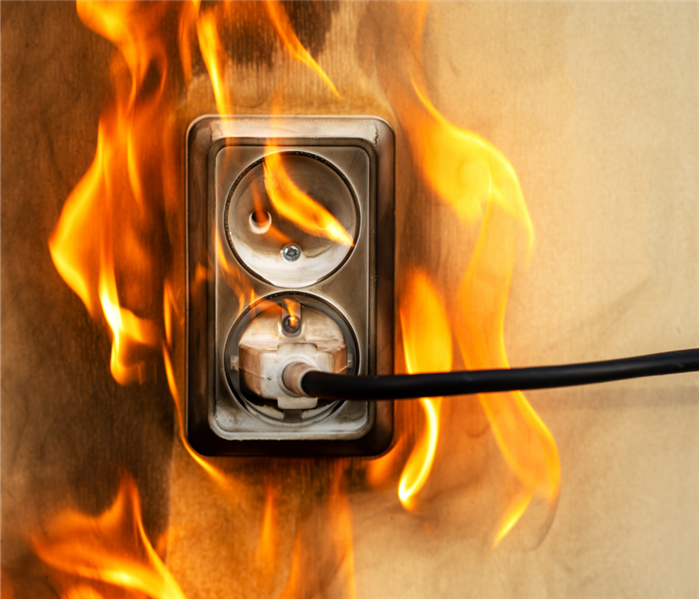 No matter how bad the fire damage may be, your local experts at SERVPRO of Rutherford County are ready to help you immediately when you need us!
No matter how bad the fire damage may be, your local experts at SERVPRO of Rutherford County are ready to help you immediately when you need us!
If your home or business experiences a fire, the last thing you want to worry about is the electrical wiring and cables. Unfortunately, this is something that you will need to deal with as part of the fire damage restoration process. Electrical wiring can be damaged by high heat, smoke, and soot from a fire, and can cause dangerous situations if not repaired properly. In this blog post, we will discuss how fire damage affects electrical wiring and what you need to do to restore it safely.
In modern-day homes, you will most likely run into two types of electrical wiring. Copper is the most common type and is found in most homes built before 1990. Aluminum wiring was more popular in homes built from the 1960s to the 1980s, and is now less common due to its tendency to overheat and spark fire damage.
Copper melts at 1984°F, and the temperature of a house fire can reach temperatures as high as 3000°F-3500°F.
However, the real problem when it comes to electrical fire damage is the plastic insulation and jacketing that surrounds the wires and electrical cables. These are typically designed to survive temperatures up to 194°F, which is well below average temperatures in a house fire.
So as the temperature of a house fire rises, the plastic begins to expand, stretch out, and melt. This non-conductive plastic coating is meant to prevent wires from touching each other and causing a spark or short-circuit. However, once the coating is melted, it can no longer serve its purpose, and wires can easily touch each other, creating a dangerous spark.
This is why your local fire restoration experts at SERVPRO of Rutherford County carefully assess property damage to determine how hot the fire could have become in different areas of your home. This way, our fire repair experts can be sure to remove exactly what is needed.
In addition to the fire itself, smoke from a fire can also cause damage to electrical wiring. Smoke contains soot and other debris that can coat the wiring and insulation, causing it to deteriorate over time due to smoke's naturally acidic nature.
That is why our trained fire restoration technicians make sure to carefully clean up all smoke damage after a fire because damage may occur much later on.
If your home or business has been affected by a fire, our technicians are ready to respond immediately.
Call today! (615) 849-9794
Tips to Stay Safe during Fire Damage: SERVPRO of Rutherford County
3/29/2022 (Permalink)
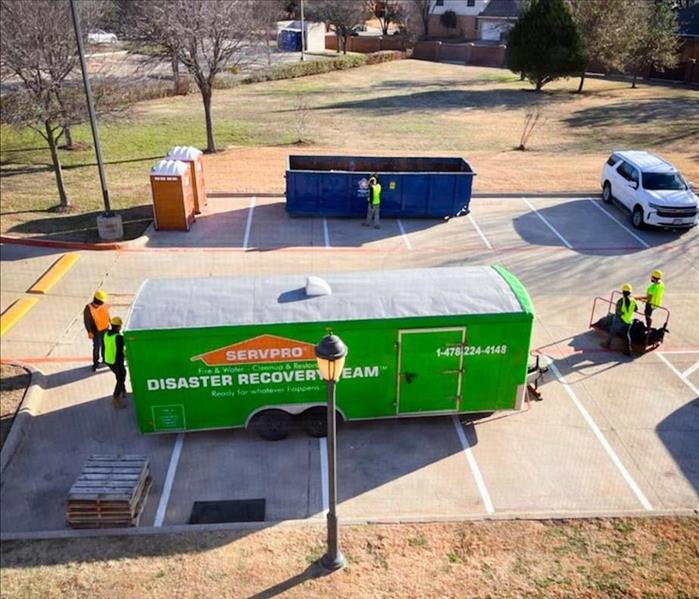 No matter how serious your property damage may be, SERVPRO of Rutherford County is your local expert for restoring your home or business.
No matter how serious your property damage may be, SERVPRO of Rutherford County is your local expert for restoring your home or business.
It's that time of year again - fire season in Rutherford County, TN, and surrounding areas. Between February and May, the weather gets hotter and drier, while the risk of house fires rises. A fire may start from a variety of sources, ranging from a faulty wire to an overloaded outlet to a kitchen mishap to a bonfire left unattended. It's critical to know how to react quickly and effectively if your home catches fire.
Here's What You Need To Know If A Fire Starts:
The first line of defense against a house fire is to know how to use the proper fire extinguisher for the situation. This simple procedure can help save lives and hundreds of thousands of dollars in property damage. If the fire spreads uncontrollably, evacuate immediately and stay away, then call 9-1-1. Leave all of your belongings where they are and save yourself and your loved ones.
If your clothing ignites, remember the old adage: Stop, Drop, and Roll.
It's critical to utilize the stairs if you live in a building with elevators in case of a fire. The elevator electrical system may be damaged by a fire, causing the shaft to operate like a chimney and rapidly fill up with deadly fumes.
Doors may be used to your advantage in a fire, potentially saving your life. If the doorknob or handle is hot, don't open it. If you can't exit through the primary route, look for another option. Do not open any doors that are warm to the touch.
Close any doors that might obstruct your exits, lay a wet towel beneath the doors, and call the fire department or 9-1-1 if flames, heat, or fire block your avenues of escape. Tell them exactly where you are so they can find you.
If you're near a window that you can't use as an escape, open it and wave a brightly colored cloth or use your phone flashlight to signal for help.
What To Do After a Fire
After a fire, it is important to contact a professional fire damage restoration company like SERVPRO of Rutherford County. We have the training, experience, and equipment to properly restore your home - "Like it never even happened."
If you try to clean up the fire damage yourself, you could end up making the situation worse both in your home and with your insurance company's process.
Trust the experts, and call today!
4 Ways To Prevent Candle Fires
2/16/2022 (Permalink)
 Candles are a common cause of fires, particularly when an open flame is left unattended.
Candles are a common cause of fires, particularly when an open flame is left unattended.
Reducing the Risk of Candle Fire
Candles are a common cause of fires, particularly when an open flame is left unattended. The best way to prevent a candle fire is to use a lighting or fragrance alternative without an open flame. Here are four tips for reducing the risk of a candle starting a fire at a residence in Blackman, TN.
1. Use Open-Flame Alternatives
No matter why you use candles, you can probably find a safer alternative. LED candles can be ideal substitutes for decorative or mood lighting purposes. If you enjoy a scent, consider using a candle warmer with your favorite wax candles or other fragrance alternatives such as reed diffusers.
2. Don't Light Candles In a Bedroom
Fires are prone to start whenever people light open flames in a bedroom. Two of the most common fire causes are lit candles and cigarettes. Do not burn anything in a room where you run the risk of falling asleep and leaving a flame unattended.
3. Blow Out Candles Before Leaving a Room
It is very easy to forget that a candle is burning before leaving a room. In addition to the risk of candle fire posed by an unattended open flame, a lit candle can endanger children or pets and pose an increased risk of accidental fire. If you light candles at the dinner table, make sure to blow them out when you clear the table.
4. Keep Combustibles at a Safe Distance
Keep any combustible materials such as bedding, curtains, papers, or upholstery at least 12 inches away from a lit candle. Most candle fires start when a flammable material makes accidental contact with an open flame.
These measures can prevent a candle fire from starting at a residence in Blackman, TN. If a home sustains damage as a result of a fire, contact a restoration service that specializes in fire and smoke cleanup.
Cleaning Up After a Burst or Broken Pipe
2/9/2022 (Permalink)
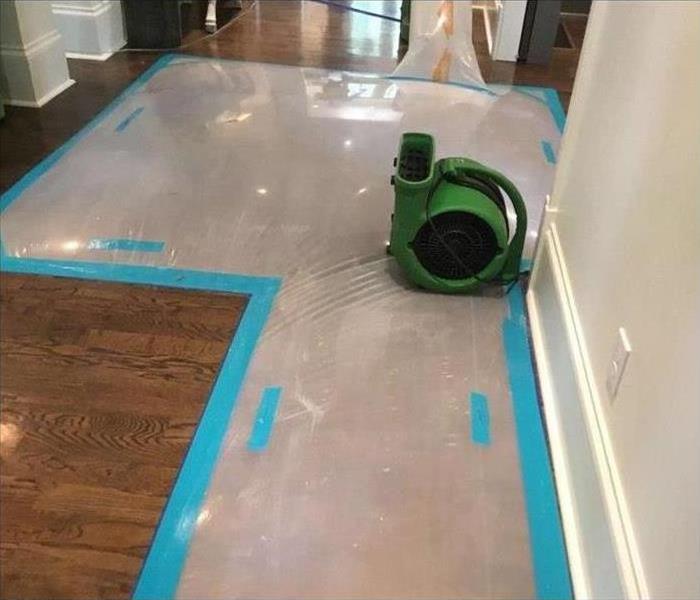 Residential water restoration in Walterhill, TN.
Residential water restoration in Walterhill, TN.
Cleaning Up After a Pipe Burst or Break
Every homeowner winds up with a water accident sooner or later. If it isn’t a broken pipe or a water heater that gives out, it will be a leaky seal or backed up sump pump. That’s just the nature of homeownership. When you are cleaning up after a plumbing emergency that left water in your home in Walterhill, TN, it’s important to understand the steps you need to take to get yourself back on your feet again quickly.
1. Shut Off Your Water Main. Before you bother calling for a plumber to fix the pipe itself, make sure you turn off the water. This will stop incoming water and allow for cleanup if the problem is a plumbing emergency.
2. Contact Your Insurance Company. Most insurance companies cover cleaning services and repair for water damage from plumbing accidents. Your regular plan deductible will apply. Major carriers often preauthorize cleanup services to streamline billing, so give your carrier’s claims line a quick call.
3. Contact a Cleaning Service. Residential water damage cleanup involves removing the water in home areas and dry cleaning the carpet, furniture, and other items in the area. If you have multiple phone lines in your household, calling for a cleaning service in Walterhill, TN, on one line while a family member contacts your insurance company can speed up the entire process.
4. Remove Dry Items. Once you know that help is on the way, it’s time to take dry and unaffected items out of the water damaged areas of the home. That way, the cleanup crew can more easily get to the affected belongings in your home.
5. Contact a Plumber. Cleaning services are not usually plumbing services, so if you have experienced a plumbing emergency, you will need to call for a plumber to fix the problem before turning your water back on.
Remember, while it is important to take care of the broken pipe quickly, water in home living areas continues to do damage until it is properly cleaned up. That’s why it’s important to contact a dry cleaning service right away.




 24/7 Emergency Service
24/7 Emergency Service









